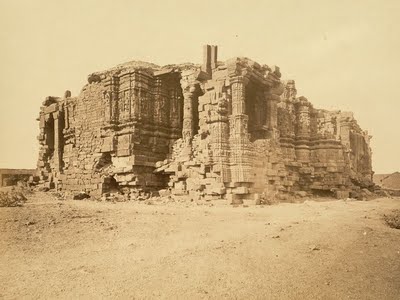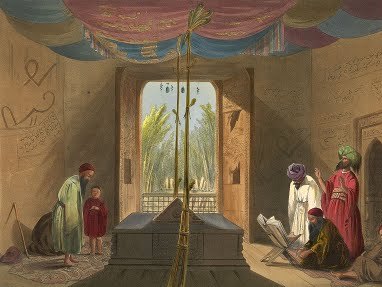







Somnath Jyotirling




Ruins of somnath temple from 1869 Inside view of Somnath in 1869 Tomb of Sultan Mahmud of Ghazni, in 1839- 40,
Doors at Somnath, which he destroyed in ca 1024


pilgrimage
centers
Amarnath
Amritsar
Ayodhya
Badrinath
Bodha
Gaya
jyothirlingas
kanyakumari
Khajuraho
konark temple
Madurai
Mathura
Pandharpur
Pashupatinath
Puri Jagannath
Rameswaram
Rishikesh
Sarnath
Satya sai baba
Shani Shingnapur
Srikalahasti
Shri
Lakshmi GoldenTemple
Tirupathi
Vaishno Devi
SadGurus
Akkalkot
Maharaj
Shripad
SriVallabh
Dwadasa
jyotirlingas
Somanath
Shrishailam
Omkareshwar
Vaidyanath
Maha
Kaleshwar
Kashi
vishwanath
Bhimashankar
kedarnath
Nageshwer
Trimbakeshwar
Grishneshwar
Shakti
peethas
Sightseeing
Agra
Ajanta caves
Delhi
Ellora caves
Goa
Jaipur
Kashmir
Manasarovar
Foreign Trips
Somnath
Temple in Gujarat Somnath Temple Jyotirlinga is situated at Somnath
Patan (the south coast of Saurashtra), near Veraval in (Prabhas
Kshetra) Kathaiwad district in Gujarat. Somnath is considered to be
the first of the 12 Jyotirlingas of Shiva and is a revered
pilgrimage center in India.
The Skanda
Purana describes the Sparsa Linga of Somnath as one bright as the
sun, the size of an egg, lodged underground. The Mahabharata also
refers to the Prabhasa Kshetra and the legend of the moon
worshipping Shiva.
Shree Somnath is first among the twelve Aadi Jyotirlings of India. It is the holy place of the Aadi Jyotirling Shree Somnath Mahadev and it also has the sacred soil from where Bhagvan Shri Krishna took his last journey to his neejdham.
Somnath
temple stands at the shore of the Arabian ocean on the western
corner of Indian subcontinent in Gujarat State. This pilgrimage is
one of the oldest and finds its reference in the ancient texts like
Skandpuran, Shreemad Bhagavat, Shivpuran etc. The hymn from
Rig-Veda quoted below mention the Bhagvan Someshwar along with the
great pilgrimage like Gangaji, Yamunaji and Eastward Saraswati.
This signifies the ancient value of this
Tirthdham.
Ancient
Indian traditions maintain a close relationship of Somnath with
release of Chandra (Moon God) from the curse of his father-in-law
Daksha Prajapati.In the Shiva Purana and Nandi
Upapurana, Shiva said, `I am always present
everywhere but specially in 12 forms
and places as the Jyotirlingas`. Somnath is one
of these 12 holy places. This is the first among the twelve
holy Shiva Jyotirlings. Moon was married to Twenty-Seven
daughters of Daksha. However, he favoured Rohini and neglected
other queens.The aggrieved Daksha cursed Moon and the Moon lost
power of light. Out of these all wives, Chandra was very
partial to Rohini and showed lot more love and affection to her.
The remaining twenty six wives not only felt neglected but also
insulted. They were disappointed with their husband and went and
complained to their father. Raja Daksha was upset to see his
daughters suffer. Thus he tried twice to convince his son-in-law to
change himself, but in vain. And seeing no change in Chandra’s
attitude, he cursed that he would loose his brightness and go on
“decreasing” in size.
Chandra became very sad after having been cursed. He ran to Lord
Brahma and prayed for solution to the curse.With the advice of
Prajapita Brahma,
Lord Brahma told him that
the only way out was to worship Lord Shiva at Prabhas Kshetra
(Pauranic name of Saurashtra Region). Brahma told him to worship
Lord Shiva by Chanting Mahamrityunjay.
Chandra went to Prabhas Kshetra.
There he made a Parthiv Ling of Lord Shiv and did its Pooja. There
after he chanted Mahamrityunjay for 10 Crore times on a Rudraksh
Mala. The Penance ended after 6
months.
Pleased with the great penance and devotion of Moon, Bhagvan Shiva blessed him and relieved him from the curse of darkness partially, thus causing the periodic waning of moon. . Pauranic traditions maintain that Moon had built a golden temple, followed by a silver temple by Ravana, Bhagvan Shree Krishna is believed to have built.
Chandra (Moon) had married the twenty seven daughters of Raja Daksha. This 27 Seven Daughters Their names are:
The shore
temple of Somnath is believed to have been built in 4 phases-in
gold by Lord Soma, in silver by Ravi, in wood by lord Krishna and
in stone by King Bhimadeva.
It has with stood the six-repeated desecration by the Muslim
invaders. The very existence of this temple is symbol of
reconstructive spirit and cultural unity of our society.
The seventh existing temple is built in the Kailas Mahameru Prasad
style. The temple is consisting of Garbhgruh, Sabhamandap and
Nrityamandap with a 150 feet high Shikhar. The Kalash at the top of
the Shikhar weighs 10 tons and the Dhwajdand is 27 feet tall and 1
foot in circumference.
Somnath temple with Sandalwood. Located as it is, it is widely
believed that if one were to sail from here in a straight line, the
end of the journey would be at the North Pole, without having to
travel over land.
The research based on ancient Indian classical texts show that
first
Somnath Jyotirling Pran-Pratistha was done on the auspicious third
day of brighter half of Shravan month during the tenth Treta yug of
Vaivswat Manvantar. Swami Shri Gajananand Saraswatiji, Chairman of
Shrimad Aadhya
Jagadguru Shankaracharya Vedic Shodh Sansthan, Varanasi suggested
that the said first temple was built 7,99,25,105 years ago as
derived from the traditions of Prabhas Khand of Skand Puran. Thus,
this temple is a perennial source of inspiration for millions of
Hindus since time immemorial.
The later sources of history account for several desecrations by
Muslims invaders during eleventh to eighteen century A.D. The
temple was rebuilt every time with the reconstructive spirit of the
people. The modern temple was reconstructed with the resolve of
Sardar Patel who visited the ruins of Somnath temple on November 13
1947. Then President of India, Dr. Rajendra Prasad, did the
Pran-Pratistha at the existing temple on 11 May 1951.
Somnath temple stands at the shore of the Arabian ocean on the
western corner of Indian subcontinent in Gujarat State. This
pilgrimage is one of the oldest and finds its reference in the
ancient texts like Skandpuran,
Shreemad Bhagavat, Shivpuran etc. The hymn from Rig-Veda quoted
below mention the Bhagvan Someshwar along with the great pilgrimage
like Gangaji, Yamunaji and Eastward Saraswati.This signifies the
ancient value of this Tirthdham. Somnath is in Prabhas Patan very
near to Veraval.
Somnath means “The Protector of Moon God.” The Somnath Temple is
known as ‘the Shrine Eternal,’ as although the temple has been
destroyed six times it has been rebuilt every single time




CopyRights © 2013.All Rights Are Reserved Site designed and Maintained by Harish






